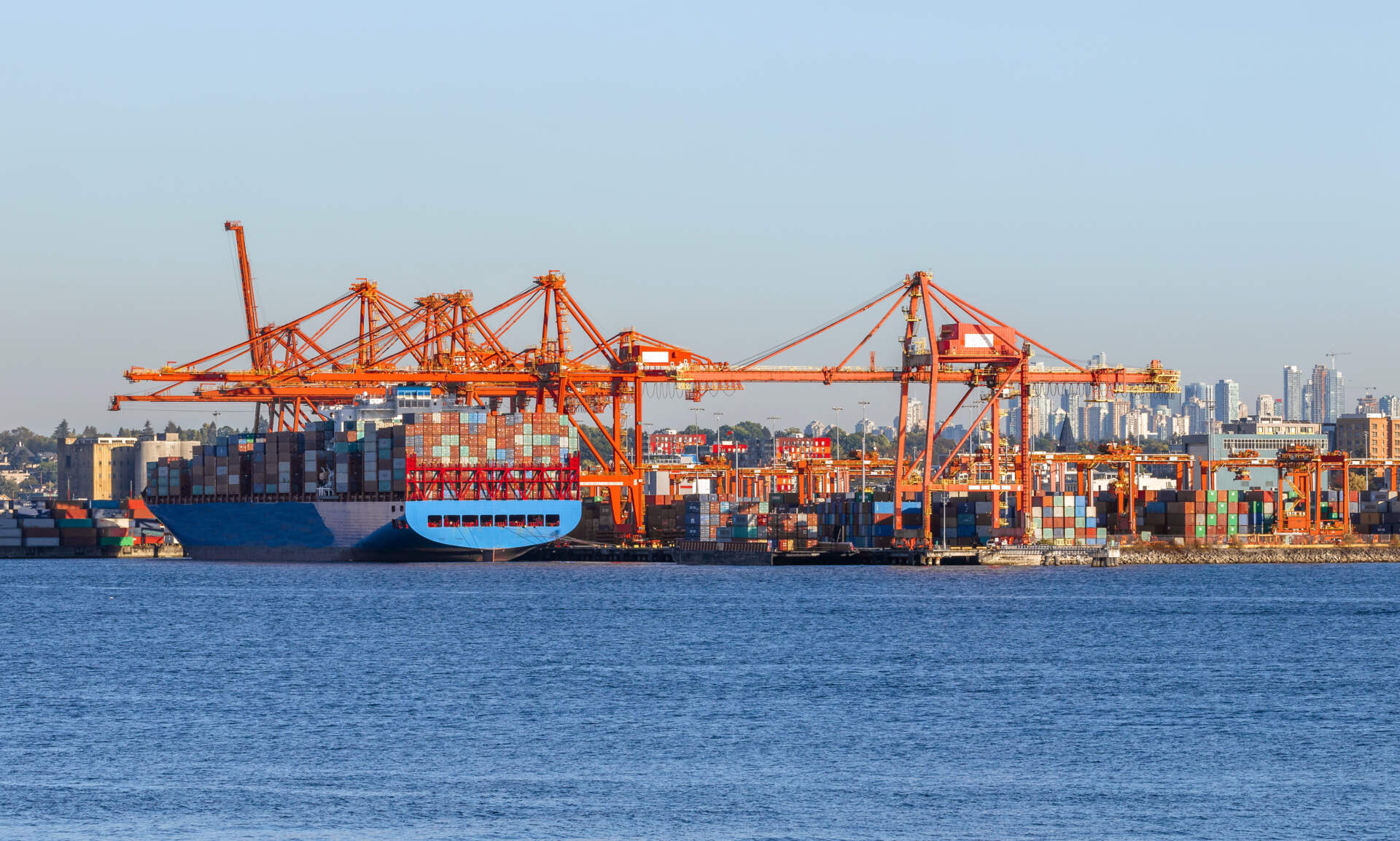
Canada saw its sixth consecutive merchandise trade deficit in August, according to numbers released by Statistics Canada on October 8, 2024.1 The trade deficit for the month was $1.1 billion. Imports rose in August while exports declined.
Exports Down 1%
Exports fell 1% in August to $64.3 billion, with 6 of 11 product sections seeing declines. The number represents a 0.5% decrease year over year. Exports were up 0.1% in real (or volume) terms.
Imports Rise Slightly
Imports, meanwhile, increased to $65.4 billion, a modest increase of 0.3%. This comes after a 1.4% drop the previous month. The number is up 1% year over year. 6 of 11 product sections were up. The increase was 0.4% in real (or volume) terms.
Trade Surplus with US, Trade Deficit with Rest of World Both Shrink
Canada maintained a trade surplus with the United States, although it fell from $10.5 billion in July to $8 billion in August. Exports to the US were down 4.3%, while imports from our southern neighbour rose 0.9%.
Canada’s trade deficit with countries other than the US narrowed from $10.8 billion in July to $9.1 billion in August. Imports from these countries fell 0.7% while exports rose sharply, by 10.3%.
Industry Breakdown
Farm, fishing and intermediate food products
Exports $4.9 billion, up 4% month over month
Imports $2.7 billion, up 4.1%
Basic and industrial chemical, plastic and rubber products
Exports $3.6 billion, up 0.4%
Imports $5 billion, down 3.1%
Forestry products and building and packaging materials
Exports $3.8 billion, down 5.5%
Imports $2.9 billion, up 0.2%
Industrial machinery, equipment and parts
Exports $4.2 billion, up 1.4%
Imports $7.5 billion, up 3.8%
Electronic and electrical equipment and parts
Exports $2.9 billion, up 1%
Imports $7.4 billion, up 1%
Consumer goods
Exports $7.7 billion, down 2.4%
Imports $12.9 billion, down 2.8%
Will Strikes Hurt Canada’s Reputation?
A grain worker’s strike at the Port of Vancouver is the latest in a long string of headline-generating labour events impacting Canada’s supply chain. Canadian Alliance Terminals relies on its experience to help clients create contingency plans during work stoppages and other unforeseen events. Still, President William McKinnon worries about the cumulative impact on Canada’s reputation.
“The grain workers strike doesn’t really impact our business, but the bigger picture is that it continues to show instability in Canadian labour and in our ability to provide services that impact global markets,” says McKinnon. “I think it’s embarrassing for us as a country. I can imagine somebody in another country saying, there you go, the Canadians are on strike again. We had the rail strike, now we’ve got the grain strike. It’s just ongoing. Canada has to be considered open for responsible business.”2
Canadian Grocers vs. Vendors: Are Tensions Cooling?
In recent years CAT has reported on tensions between Canadian grocers and their vendors. Many felt that large chains in the industry were using their leverage to impose unfair terms and stipulations upon those who supply their stores. McKinnon is hopeful that the worst may be behind us.
“I recently spoke with a customer who does a lot of private label work for the grocery chains,” he says. “They indicated that there seems to be a more collaborative nature to the relationship nowadays.”
McKinnon believes that federal efforts to establish a code of conduct for the grocery trade are causing industry giants to reconsider their practices.
“I think the grocery trade has backed off a bit on beating up on suppliers,” he says. “They’re recognizing that they can’t continue to be punitive to customers or vendors.”
CAT Clients Poised to Weather Economic Uncertainty
“We are hearing from our clients that they are very concerned about the economy,” says McKinnon.
He chalks the doubt up to a host of uncertainties impacting the political and economic landscapes.
“We’ve got a provincial election taking place here in BC, a federal election that’s likely to happen in the next 3-5 months, and a US election,” says McKinnon. “Furthermore, central governments are reducing interest rates in Canada and the US, perhaps indicating an underlying economic concern.”
Despite the uncertainty, McKinnon sees strength in the CAT client base, many of whom are in retail (brick & mortar, e-commerce), food, consumer chemicals, automotive, healthcare, and other established sectors.
“If you have a flavour of the month product, you may not survive,” he admits. “CAT’s customers have solid businesses and good products, which will always be needed by the marketplace. We’re in this business for the long haul and our customers are as well. We’ll find a way to navigate these challenges. That’s just who we are.”
Cited Sources
1 Government of Canada, Statistics Canada. “Statistics Canada: Canada’s National Statistical Agency / Statistique Canada : Organisme Statistique National Du Canada.” Government of Canada, Statistics Canada, Gouvernement du Canada, Statistique Canada, December 19, 2012. https://www.statcan.gc.ca/.
2 Direct communication with William McKinnon
